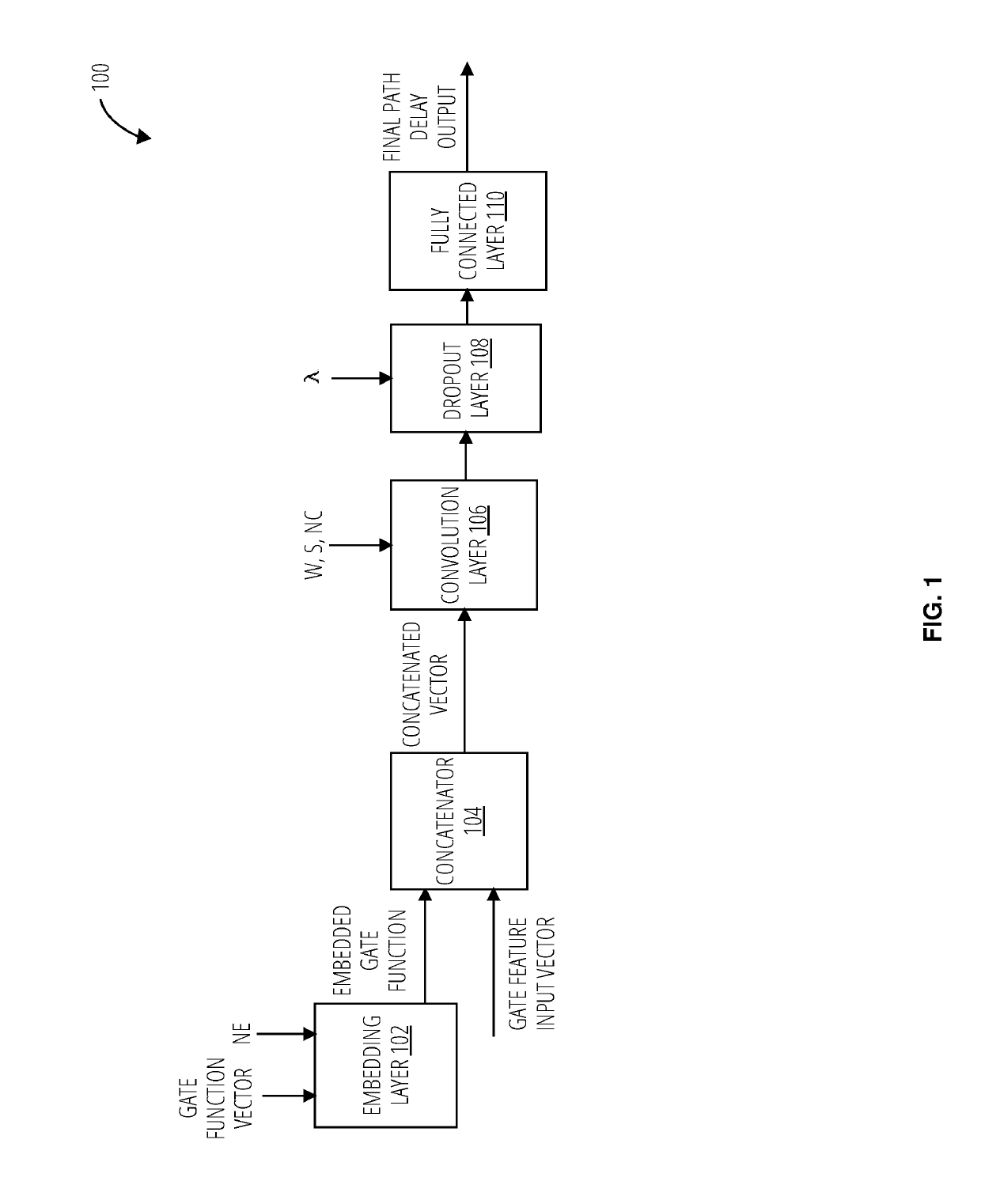Machine learning based post route path delay estimator from synthesis netlist
a technology of post route path delay and estimator, which is applied in the field of machine learning based post route path delay estimator from synthesis netlist, can solve the problems of backend flow, different wire load between post route routes, and long completion time (days)
- Summary
- Abstract
- Description
- Claims
- Application Information
AI Technical Summary
Benefits of technology
Problems solved by technology
Method used
Image
Examples
Embodiment Construction
[0013]Disclosed herein are processes and systems that improve the efficiency of machines that generate control structures (e.g., post-route / placement netlist logic, maskworks) input by other machines to manufacture complex electronic circuitry. The processes and systems generate post-routing path delay readings faster and with more accuracy than conventional systems, and thus improve timing optimization in the control structures used by machines that manufacture microchip products. For example the control structures generated using the disclosed processes and systems may be utilized to generate post-route netlist logic that is transformed into maskworks which in turn operate photolithographic equipment that manufactures microchips. The disclosed processes and systems are thus improvements to the efficiency and computerization of the inherently technological process of manufacturing microchips and lead directly to faster and more efficient microchips.
PUM
 Login to View More
Login to View More Abstract
Description
Claims
Application Information
 Login to View More
Login to View More - R&D
- Intellectual Property
- Life Sciences
- Materials
- Tech Scout
- Unparalleled Data Quality
- Higher Quality Content
- 60% Fewer Hallucinations
Browse by: Latest US Patents, China's latest patents, Technical Efficacy Thesaurus, Application Domain, Technology Topic, Popular Technical Reports.
© 2025 PatSnap. All rights reserved.Legal|Privacy policy|Modern Slavery Act Transparency Statement|Sitemap|About US| Contact US: help@patsnap.com



